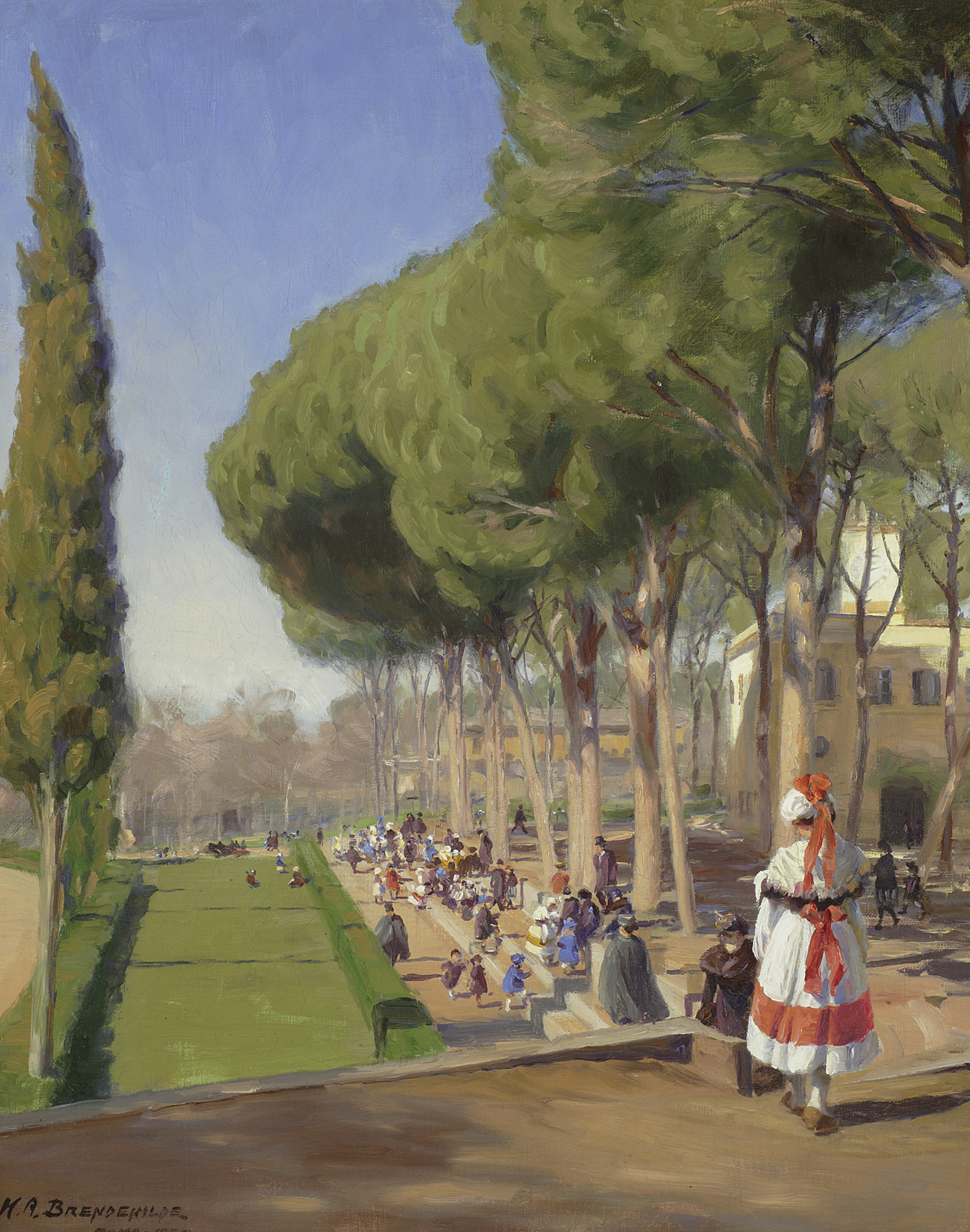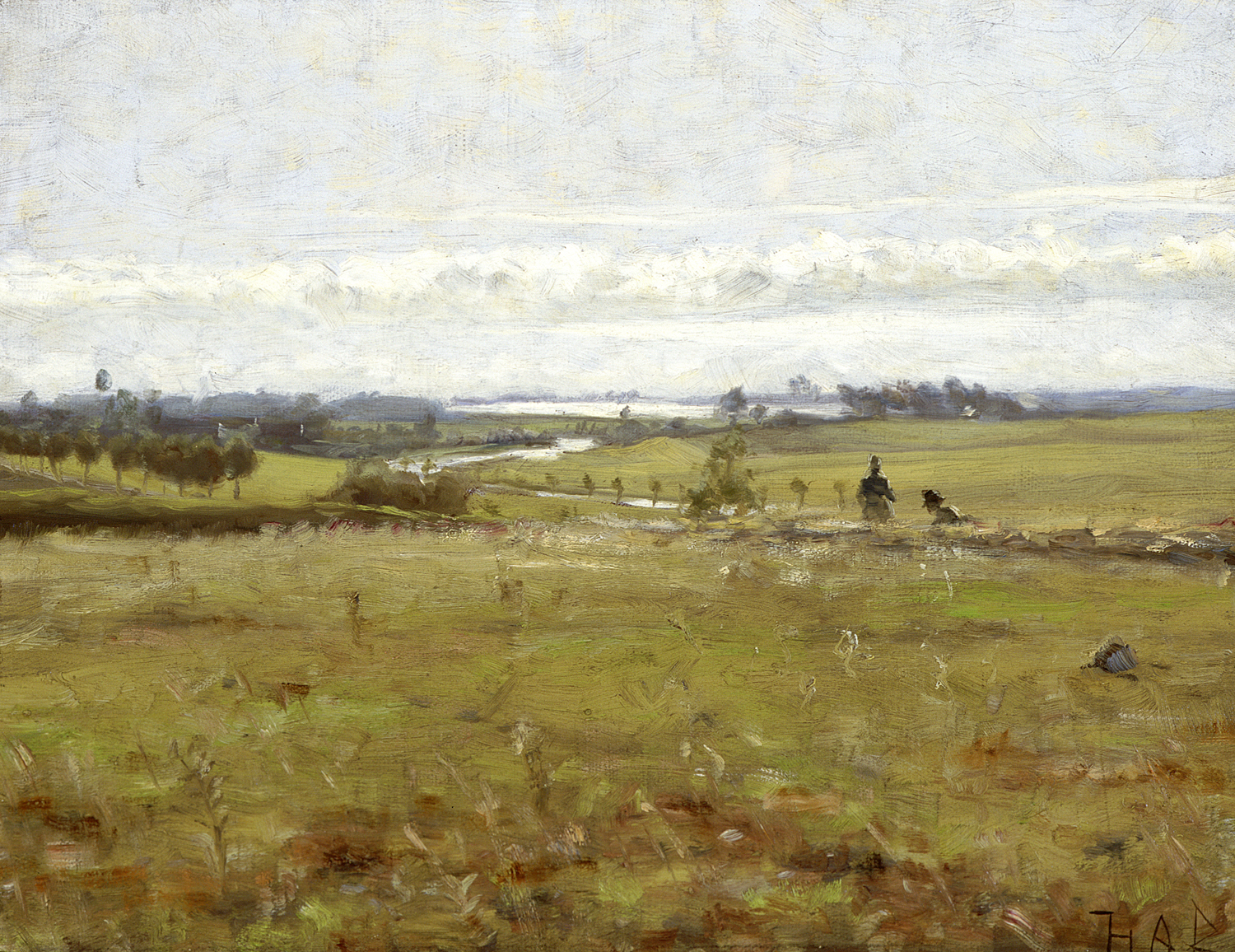SELECT SOLD
Hans Andersen Brendekilde was born Hans Andersen in 1857 to a clog maker, and later changed his surname to Brendekilde for the town he was born in, a small village close to Odense on the island of Funen. He was distantly related to the famous writer Hans Christian Andersen, and like his relation grew up with little financial support. From the ages of 4 to 10 he lived under the care of his grandparents, prior to working as a shepherd for room and board. At some point in his early teens a teacher discovered his ability to carve, and he began to apprentice with the wood carver and stonemason Wilhelm Hansen in Odense. This was followed by some training in flower painting with O.A. Hermansen. In 1877 he was accepted to study sculpture at the Royal Danish Academy of Fine Arts in Copenhagen, studying under sculptors Jens Adolf Jerichau and Harald Conradsen. Brendekilde graduated from the Academy with distinction in 1881, and although he had been formally trained as a sculptor he abandoned this medium and began to paint.
One of Brendekilde’s closest friends was the artist Laurits Andersen Ring, and during their early years shared a studio in Copenhagen. As they shared a similar painting style and both had the surname Andersen, their work was often confused. It was during this period that both artists took their additional surnames of Brendekilde and Ring after their hometowns. Having both grown up in the countryside, they were the first Danish artists to begin to depict the reality of the rural working poor in Denmark. This bold new social realism and plein-air painting was to have a profound influence on what was called the modern breakthrough in Denmark.
Brendekilde had his debut as a painter at the December exhibition at Charlottenborg Royal Exhibition in the early 1880’s. Although his reception at Charlottenborg was a great success, Brendekilde struggled financially. Lars Ebbesen, who owned the farm Petersminde in Raagelund on Funen, heard from a mutual acquaintance about Brendekilde's financial hardships and invited him to live rent free on his farm. In 1883 Brendekilde excepted, providing him the opportunity to focus on his painting. Once settled he asked his patron Ebbesen to extend the invitation to his friend L.A. Ring, who was also struggling with the cost of living in Copenhagen. This grew into the artist colony Raagelund, which in addition to himself and Ring also includes H.P. Carlsen , Søren Lund and Julius Paulsen.
By the late 1880’s, Brendekilde’s paintings had become internationally recognised. He won medals at the World Exposition in Paris in 1889, in Munch in 1891and in Chicago in 1893. While continuing to paint and exhibit his expressive social realist paintings, he also illustrated novels by Henrik Pontoppidan. Pontoppida used Brendekilde as the inspiration for the character Jørgen Hallager, a painter and socialist hero, in his famous novel Nattevagt (The Night Watch; 1894).
Brendekilde was also influential in introducing the ideas of the British Arts and Crafts movement to Denmark, when in 1884 when he began to carve and include the frame as an integrated part of his paintings. These carved and integrated frames were exhibited in 1888 at the Great Nordic Art Exhibition in Copenhagen, where J.F. Willumsen and Harald Slott-Møller were inspired to carved there own frames. Brendekilde further influenced decorative craft by being the first artist working for the famous pottery of Herman Kähler from 1885 to 1907. He is also regarded as the first artist working with glass in Denmark and worked making decorations and forms for the Glassworks of Funen in Odense from 1901 to 1904.
Brendekilde was married twice, the first time in 1884 to Ida Nielsen with whom he had 3 children, but lived a double life before marrying a second time to Maren Hansen, with whom he has a son. Alongside painting his social realist paintings, Brendekilde was a talented portraitist. As he aged his paintings became less a call for socialist reform and his subjects were more idyllic, depicting happier subjects such as children and garden scenes. He built a large home in Jyllinge on the west coast of Denmark where he planted an extensive garden with more than 3000 species of flowers, possibly influenced by Claude Monet’s garden in Giverny. Brendekilde died in Jyllinge in 1942. Today his work can be found in both private and public collections across Denmark.




